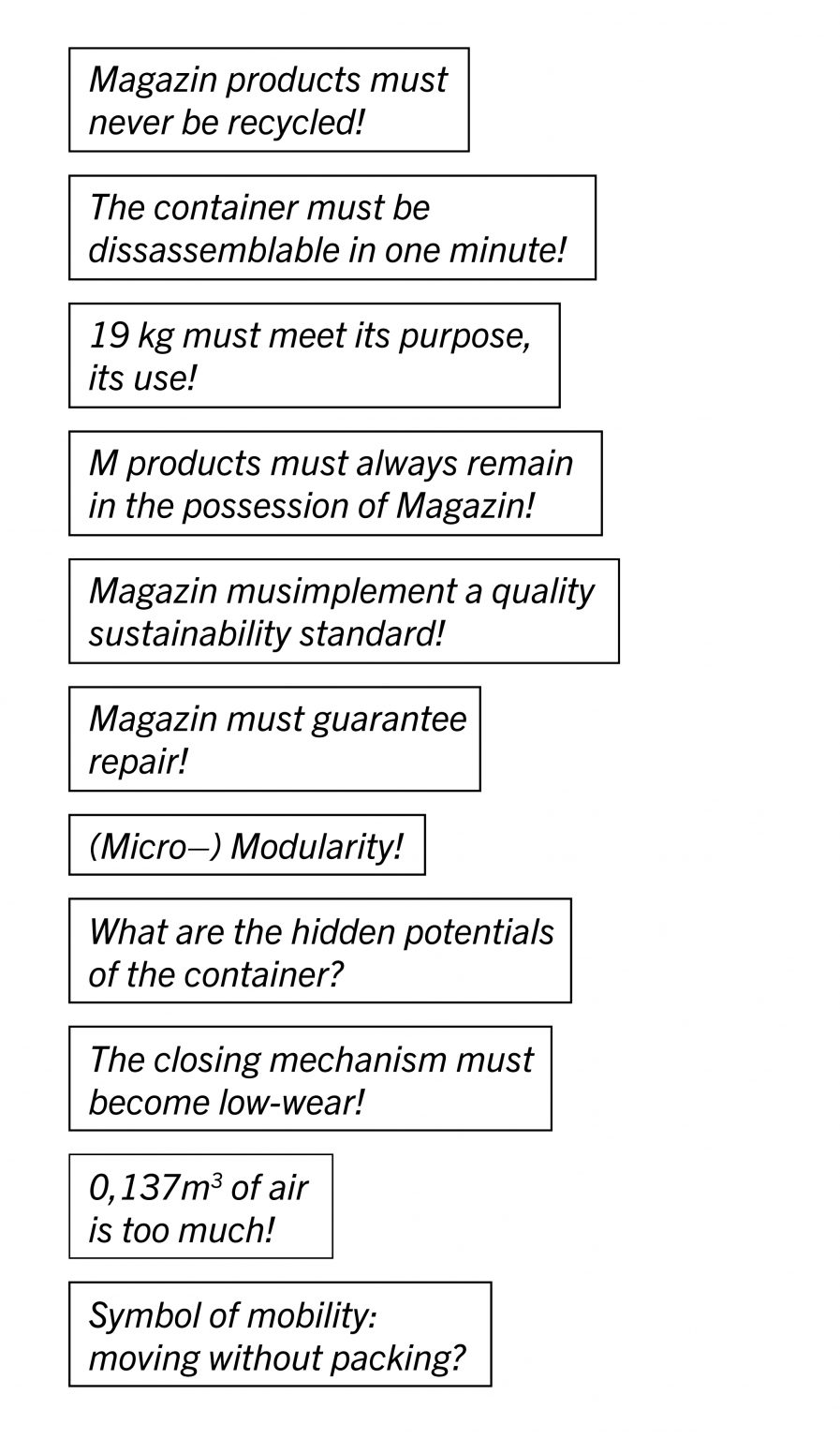
MAGAZIN
graphical analysis of sustainability aspects & resulting claims
MAGAZIN was founded in 1971 in Stuttgart by a handful of young entrepreneurs, who from the very beginning asked themselves which objects were actually needed. From the very outset, the company pursued a careful choice and only sold objects that, in their eyes, enriched everyday life in a meaningful way, according to the motto: “Fishing rod instead of dragnet”. The objects also had to meet the clear attitude of the company MAGAZIN: They were to be functional, durable and self-referential, yet not undercooled and emotionless. In addition, they had to think around corners and be novel in their construction or question existing things. In the 1970s, when social conventions were being questioned and which were characterized by thoughts critical of capitalism, renewal and social change, Magazin began to borrow usable objects from other contexts and repurpose them. Light for construction sites and heavy-duty shelving thus found their way into German living rooms for the first time and formulated their very own response to the problems of their time. Not only converted furniture finds its place in the catalog. Products from other cultures are also distributed by MAGAZIN in Germany: Gastronomy glasses from France, household products from Japan. All this at a time when such things could not be ordered in the twinkling of an eye on the Internet. In the course of time, various stores were established in several major German cities: Stuttgart, Düsseldorf, Cologne, Bonn and others throughout the FRG. Almost 50 years after MAGAZIN was founded as a pure publisher for selected products, the company started to produce itself and now has to face completely new questions. How can purposeful and demand-oriented products be designed from an in-house development? How must we produce and act in the future? What responsibility arises when a publisher produces itself? What are the opportunities for sustainability? We helped MAGAZIN find answers to these questions. In the heart of Berlin, the product development team works on new designs or brings the designs of external designers to market.
The first step of our collaboration with MAGAZIN was the analysis of an existing product. We were given the opportunity to take a look at the Container DS – a piece of stowage furniture reminiscent of a shipping container. After many discussions, several questions and a visit to the factory in Poland, where the container is largely manufactured and assembled, our findings resulted in a graphic and a practical analysis. The graphical analysis highlights the life cycle of a Container DS in a non-judgmental way. It shows the origin of the materials, e.g. the steel, the individual procurement and delivery routes as well as the associated “eco-costs” and also provides an outlook on a potential end-of-life scenario.
Based on the graphical (and the practical) analysis we developed a list of theses. These theses result from the insights we gained during the analysis and helped us to find good levers to make the container DS or other structures and systems around MAGAZIN more sustainable.
| student: | Ying Guo, Eric Geißler & Jacobo Cuesta Wolf |
| cooperating company: | Magazin |
| many thanks to: | Philipp Witte & Stephan Dornhofer |
| project: | is transition for sale? |
| year: | 2022 |

